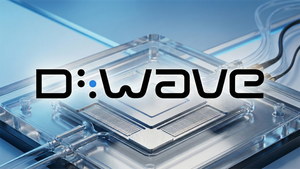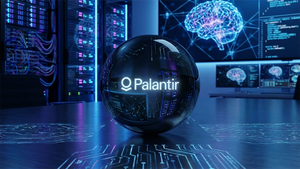
OpenAI has once again sent ripples through the technology world with the dual launch of its highly anticipated GPT-5 large language model and significant enhancements to its gpt-realtime and Realtime API in August and September 2025. These strategic releases not only mark a pivotal moment in the evolution of artificial intelligence but also signal a profound shift towards more autonomous, intuitive, and production-ready AI applications. The advancements promise to redefine human-computer interaction, accelerate enterprise-wide AI adoption, and intensify the race among tech giants to dominate the burgeoning AI landscape.
The immediate implications are far-reaching, setting new benchmarks for AI capabilities across reasoning, multimodal understanding, and real-time conversational fluency. As businesses grapple with integrating these powerful tools, and developers explore unprecedented possibilities, the market stands on the cusp of a transformative era driven by increasingly sophisticated and accessible AI.
A Leap Forward: Unpacking OpenAI's Latest Innovations
OpenAI officially unveiled GPT-5 on August 7, 2025, positioning it as its most advanced and intelligent AI system to date. This wasn't merely an incremental update but a fundamental architectural shift. GPT-5 operates as a unified AI system, intelligently adapting its processing based on query complexity—offering fast, intuitive responses for simple tasks and engaging in deeper, "chain-of-thought" reasoning for more intricate challenges. It’s available in gpt-5, gpt-5-mini, and gpt-5-nano versions, balancing power and cost. A specialized variant, GPT-5-Codex, optimized for agentic coding, followed on September 15, 2025, boasting "dynamic thinking" for complex software engineering.
A cornerstone of GPT-5's power lies in its native multimodal capabilities, seamlessly processing and generating text, images, and audio. Future updates are expected to include video, allowing the model to interpret live feeds, PDF files, and even X-rays, or participate in real-time audio discussions without losing context. This multimodal integration, coupled with significantly enhanced multi-step logical inference and agentic tool use, allows GPT-5 to reliably execute complex, evolving tasks. OpenAI also claims a substantial reduction in hallucinations—up to 42% compared to GPT-4o—and an impressive 400,000 token context window, enabling persistent memory across extended conversations. Performance benchmarks are staggering: 94.6% on AIME 2025 for math, 74.9% on SWE-bench Verified for real-world coding, and expert-level performance in roughly half of 40+ occupations when using its deeper reasoning.
Complementing the LLM advancements, OpenAI announced on August 28, 2025, that its Realtime API had moved from beta to general availability, introducing gpt-realtime. This cutting-edge speech-to-speech model revolutionizes voice interactions by handling audio input and output in a single process, replacing the traditional multi-step chain. The result is smoother, faster, and more natural voice conversations, capturing non-verbal cues and adapting tone. New capabilities include Remote Model Context Protocol (MCP) server support for dynamic tool integration, image input for visually enriched conversations, and SIP Phone Calling Support, extending AI agents to traditional telephony. With improved instruction following, function calling, reusable prompts, and a 20% cost reduction, gpt-realtime makes production-ready voice agents a tangible reality for industries like customer support, healthcare, and education.
The Market Responds: Winners, Losers, and Strategic Shifts
The twin launches of GPT-5 and the gpt-realtime API upgrades are poised to trigger a significant reorientation within the broader AI market. The enhanced capabilities in reasoning, coding, and real-time multimodal understanding will undoubtedly accelerate AI adoption across virtually every sector. Businesses are now empowered to automate more complex workflows, and developers have access to more capable AI partners, evidenced by OpenAI's API usage surpassing 2.2 billion daily calls in 2025. This surge in adoption will fuel the shift towards "agentic AI"—autonomous AI assistants that can complete intricate tasks without human oversight—a trend Gartner named a top priority for 2025, with market forecasts predicting growth from $5 billion to over $40 billion by 2030.
While GPT-5 represents a significant leap, the underlying trend of AI model commoditization continues, shifting the competitive focus towards pricing, distribution, and efficient deployment. OpenAI's aggressive pricing for GPT-5 (half the cost of GPT-4o for input tokens) and gpt-realtime (20% cheaper than its preview) underscores this dynamic. Cloud providers are direct beneficiaries; Microsoft (NASDAQ: MSFT), with its deep strategic partnership and multi-billion dollar investment in OpenAI, stands to gain immensely as GPT-5 is integrated into Microsoft Copilot and Azure OpenAI Service. Similarly, Google (NASDAQ: GOOGL) Cloud and Amazon (NASDAQ: AMZN) Web Services will see increased demand for their scalable AI infrastructure as more companies deploy sophisticated AI applications. Nvidia (NASDAQ: NVDA), as the dominant supplier of the GPUs essential for training and running these advanced models, will continue to experience massive demand for its hardware.
On the other hand, other LLM providers like Anthropic and Cohere face intensified pressure to match OpenAI's performance and cost-effectiveness. While still innovating, the bar has been raised, and the market share battle will be fierce. Cloud providers without robust AI partnerships may struggle to attract AI workloads. Traditional software companies that are slow to integrate agentic AI risk being outcompeted by more agile, AI-powered solutions. Even major players like IBM (NYSE: IBM), despite its AI initiatives, may find it challenging to compete at the cutting edge without significant strategic shifts. Meta (NASDAQ: META) and Google, while strong in AI, face direct competition in the LLM space with their respective Gemini and Llama series. However, companies like Salesforce (NYSE: CRM) and Adobe (NASDAQ: ADBE) have proactively renewed multi-year OpenAI partnerships in 2025, indicating a strategy to embed cutting-edge AI into their core product offerings, thereby enhancing their market positions.
The Broader Implications: Shaping the AI Industry's Horizon
The launch of GPT-5, with its unified system blending speed and deep reasoning, signals a clear trend towards more sophisticated, adaptable, and multimodal LLM architectures. The focus is no longer solely on model size but on intelligence, efficiency, and practical utility, particularly in economically important knowledge work tasks where GPT-5 can perform comparably to human experts. This pushes the boundaries of what LLMs can achieve, transforming them from advanced tools into genuine co-workers and creative partners.
The gpt-realtime and Realtime API upgrades represent a "pivotal moment" for real-time, multi-modal conversational AI, making natural and human-like interactions a production-ready reality across diverse industries. This advancement will accelerate the deployment of sophisticated voice agents in customer service, education, and healthcare, fundamentally altering how businesses interact with their clients and how individuals engage with technology.
However, as AI becomes more capable and autonomous, ethical considerations become paramount. OpenAI's claims of significant reductions in hallucinations, coupled with default safety features like "Safe Completions" and increased safety budgets, demonstrate an awareness of these challenges. Yet, issues of bias in code generation, responsible deployment, and accountability frameworks for AI-generated content will remain at the forefront. The evolving regulatory landscape, exemplified by the EU AI Act of 2024, which mandates transparency in high-risk AI applications, will increasingly shape how models like GPT-5-Codex are deployed in sensitive sectors. The increased autonomy of AI agents will undoubtedly attract more attention from policymakers, necessitating new governance structures to balance innovation with safety and societal well-being.
The competitive dynamics within the AI industry are intensifying, marked by a "Great Diversification" in strategies. OpenAI's dual approach of developing flagship closed models and contributing to open-weight models highlights this. The global race for AI dominance is also impacting the chip design and manufacturing sector, with countries like China investing heavily in homegrown chips, potentially leading to a bifurcation of global AI ecosystems and further strategic complexities for multinational tech companies.
What Comes Next: Navigating the AI Frontier
In the short term (late 2025 - 2026), we can anticipate the widespread adoption of agentic AI across various industries, automating tasks from customer service to personalized assistance. GPT-5's capabilities will foster unprecedented human-AI collaboration, blurring the lines between tool and teammate, and leading to increased productivity across professions. Expect continued refinement of real-time voice AI, with even greater naturalness, emotional intelligence, and seamless multimodal understanding. This will, in turn, drive an insatiable demand for AI infrastructure, leading to continued massive investments in data centers and advanced chips.
Looking further ahead (beyond 2026), while GPT-5 is not Artificial General Intelligence (AGI), it represents a significant stride toward that goal. OpenAI's continuous push for models that can "think harder" and achieve expert-level performance aligns with this trajectory. We may see democratized fine-tuning and personalization options, allowing users to adapt AI to their specific needs more easily. AI is expected to become ubiquitous, embedded in devices, applications, and augmented reality, transforming daily routines and industries. The increasing capabilities and societal impact of AI will also necessitate more robust, and potentially international, regulatory frameworks to ensure ethical development and deployment.
Emerging market opportunities abound. Companies can leverage GPT-5-Codex to accelerate product development cycles, especially in industries like gaming, by generating prototypes and reducing time-to-market. The development of highly specialized AI agents for niche applications in healthcare, law, logistics, sales, and engineering will proliferate. Advanced conversational AI will transform learning through personalized tutoring and curriculum development, and cross-modal AI applications that seamlessly integrate text, image, audio, and potentially video in real-time will expand significantly.
Conclusion: A New Era of Intelligence Unfolds
OpenAI's latest product launches—GPT-5 and the gpt-realtime and Realtime API upgrades—represent a monumental stride in the evolution of artificial intelligence. These innovations solidify OpenAI's leadership, setting new benchmarks for large language models and real-time AI applications. The market is clearly moving towards more intelligent, autonomous, and multimodal AI systems, capable of handling increasingly complex tasks with human-like nuance and efficiency.
As we move forward, investors should closely watch several critical areas. The scaling of AI infrastructure will remain a key challenge, as the computational demands of these advanced models require continuous investment in processing power. Ethical deployment and bias mitigation will be crucial for ensuring AI systems are fair, unbiased, and transparent, particularly in sensitive applications. Navigating the complex and evolving global regulatory landscape, such as the EU AI Act, will also require continuous effort from AI developers and deployers. Finally, user adoption and trust, alongside the potential for job displacement due to increasingly capable AI agents, will be significant factors shaping the societal and economic impact of these technologies in the coming months and years. OpenAI's latest offerings are not just new products; they are foundational elements for a new era of intelligence, promising both unprecedented opportunities and profound responsibilities.




